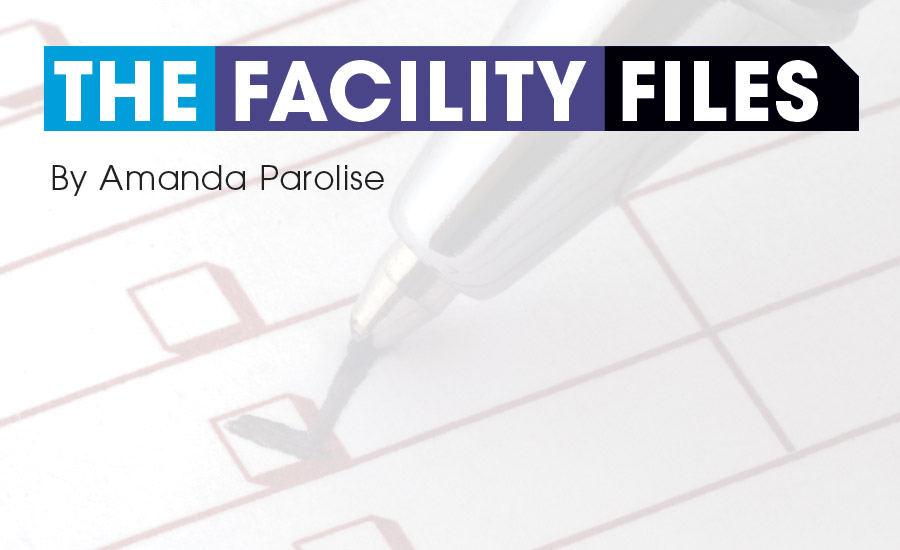This month’s Facility File is based on a project renovation of an 80,000-sq-ft existing commercial office building being renovated to an outpatient health care facility. Although the entire HVAC systems will be removed and new central air handling systems will be installed, this Facility File will focus on the B2B October test for improved hospital outdoor air ventilation and air filters application.
At the recommendation of the design team leader, the HVAC consulting engineer, the building owner has chosen the project delivery method to be IPD (integrated project delivery). The method of project deliver is based on ASHRAE 2015 Handbook — HVAC Applications, chapter 58 (Integrated Building Design). An IPD team meeting was coordinated with the owner, facility manager, owner’s representative, design team, IPD project manager, infection control (IC) 3rd-party consultant, general contractor, and subcontractors, along with a 3rd-party commissioning and air and water balancing (CxTAB) consultant. The team will review chapter 8 (Healthcare Facilities), chapters 36 through 43 (Building Operation and Management), and chapter 59 (HVAC Security). They will also read ASHRAE 2016 Handbook —HVAC Systems and Equipment, chapter 29 (Air Cleaners for Particulate and Contaminants), and ANSI/ASHRAE/ASHE Standard 170-2013 for a complete understanding of ventilation and air filtration for a proposed health care facility. This information combined with the owner’s own knowledge of operating health care facilities will assist the IPD team in understanding intricacies of owning, operating, and managing this building.
With all these design guidelines from ASHRAE, the IPD team discussed specific building standards that need to be applied to this project as well as project scheduling/timeline. For the facility operation, with in-house staff and not an outsourced group, the staff will want to assure there are adequate contract specification requirements pertaining to O&M, training, preventive maintenance work order system, and energy operating budget.
In the Phase 3 Concept Development of the IPD project, the facility manager and a few of her O&M technicians will want to contribute information to the design team member’s writing of the contract specification, and more specifically the following activities: service contracts, parts inventory, and as-built drawings requirements.
For this October B2B, the IPD team (working together with owner-designer-builder, based on a building program construction budget), the IPD estimator, and prime subcontractors will be involved in the design phase and be able to contribute to the contract documents. In the construction phase, the O&M technicians will want to revisit the issues noted above that were in the design phase. Next comes the startup and commissioning phases. The O&M staff will want to be proactive in following along with the IPD team’s mechanical-electrical in-house coordinator and the subcontractor’s startup personnel, receiving equipment and system training using the O&M manuals and contract drawings (that will eventually become the as-built drawings).
Once the startup has been completed, the ATC subcontractor, owner representative, and CxTAB consultant will complete the air balancing of the new central air and exhaust air systems. The IC consultant will commission and instruct O&M staff on IC policy and procedure. HVAC subcontractor shall go through an automatic control system initial dry-run demonstration prior to the general contractor and his subcontractors will demonstrate the system to the CxTAB consultant. The ATC subcontractor will also begin collecting system performance by trending pertinent HVAC system and equipment data, including the following:
[X] Outdoor air dry bulb and wet bulb temperature [X] Room space pressure [X] Outdoor air quantity [X] Exhaust air quantity [X] Pressure differential across filter units [X] Alarms [X] Offsite internet computer control interface.
Taking the same approach as the design engineer, the facility manager’s personnel will use a series of computer-generated touchscreen project checklists that allows her staff to confirm that the following facility files have been collected. This process should start at the beginning of construction and not at project closeout, so that the facility files can be inputted into a CMMS system. Touchscreen O&M checklists should include:
[X] equipment shop drawings [X] O&M manuals, parts list and lubricants [X] troubleshooting tips [X] remote monitoring instructions
The O&M staff should review the contractor-produced sheet metal field fabrication/field coordination drawings prior to fabrication. Touchscreen service checklists should include:
[X] Location of automatic dampers, smoke dampers, and volume dampers [X] Filters [X] Equipment and control devices [X] Access for servicing equipment.
The training process should include specific HVAC system ventilation and IC training but also emergency plan training due to unexpected alarm e.g., outdoor air quality alarm. Air balancing report will be completed and as-built conditions updated after the final TAB report. This will require the TAB subcontractor to provide the air balancing reports along with the associated system flow diagrams noting quantities and pressures for rebalancing if necessary as part of the project closeout documents. Touchscreen training checklists should include:
[X] equipment [X] system [X] emergency plan [X] automatic controls [X] energy management


